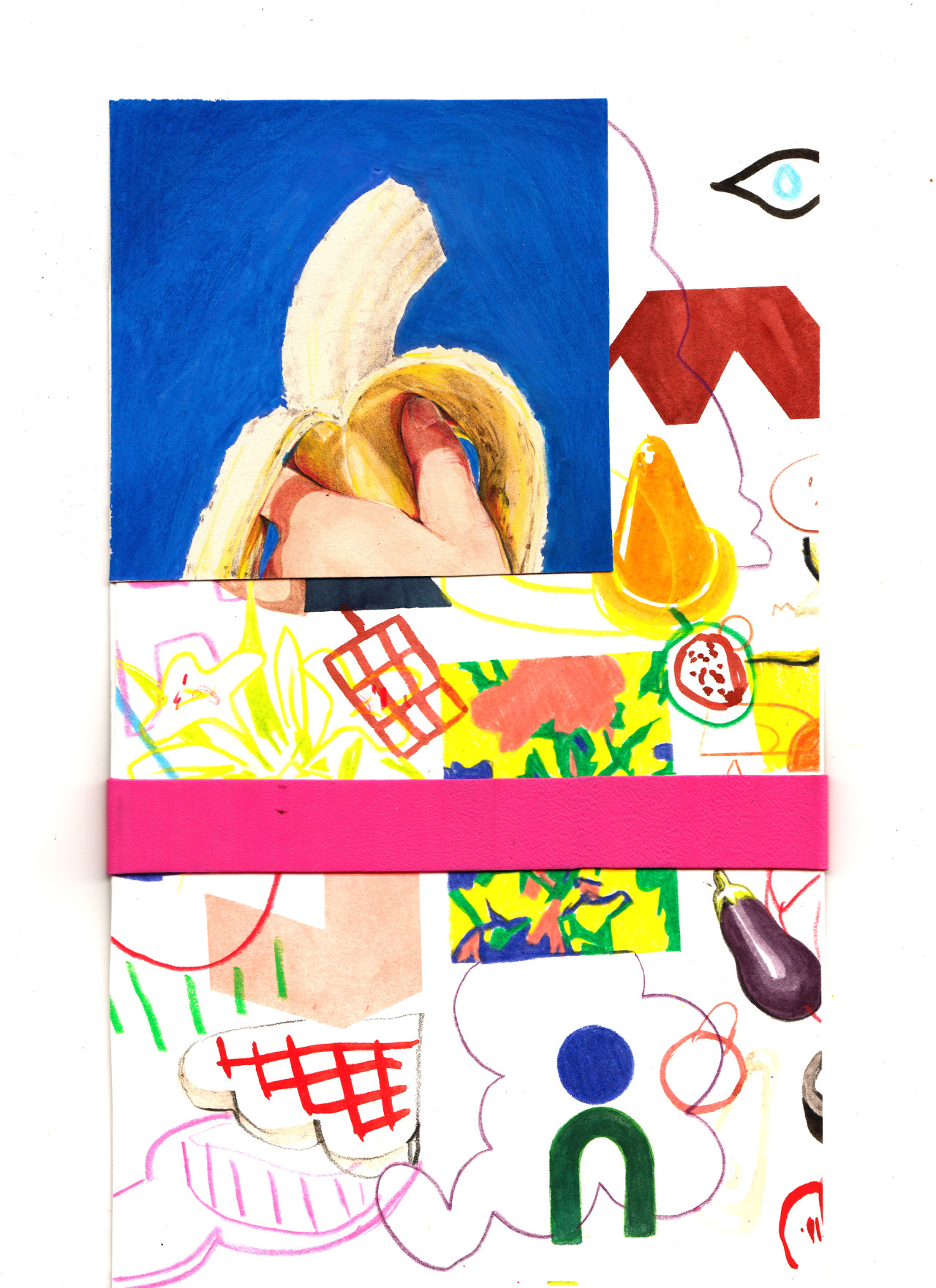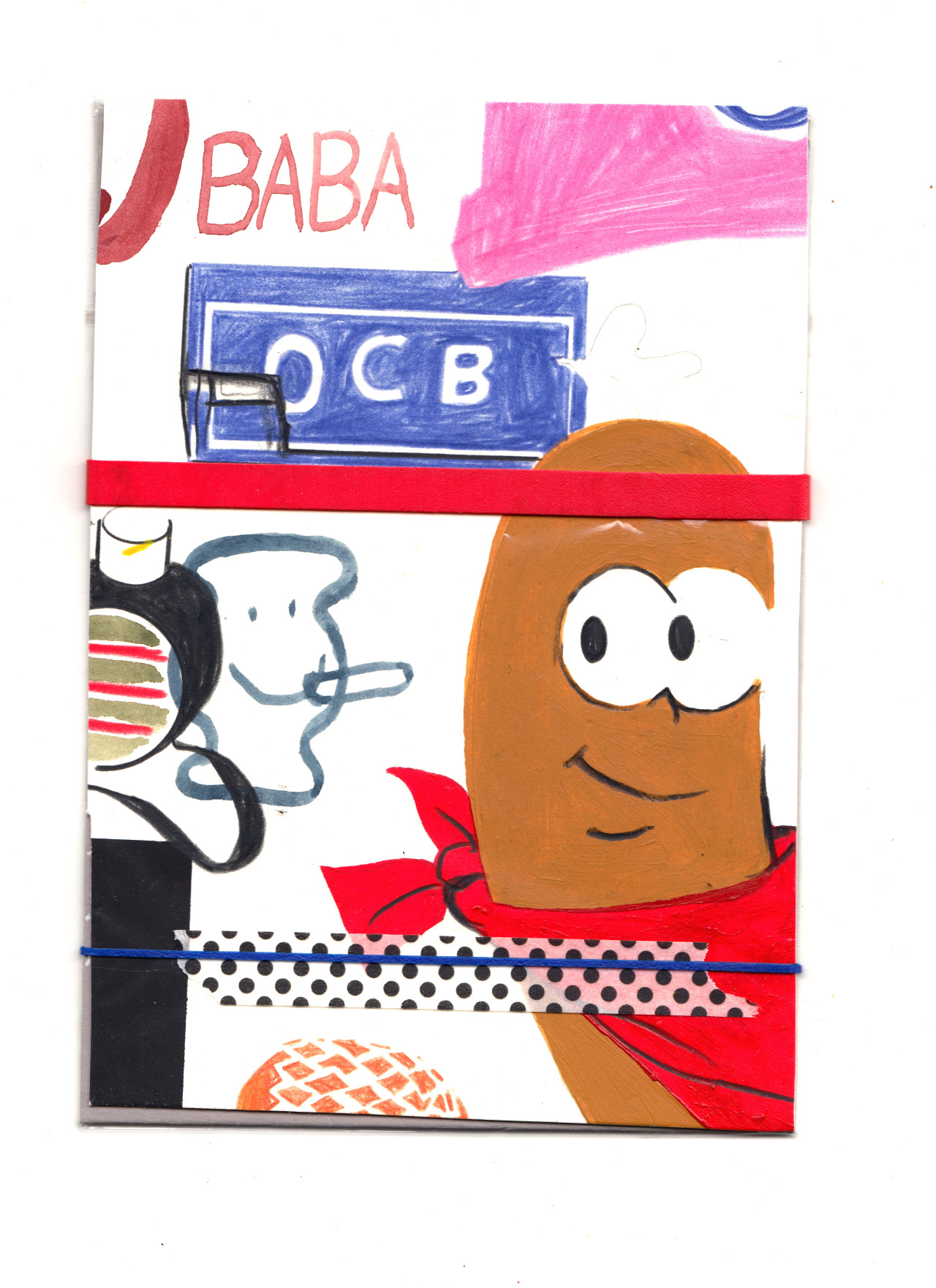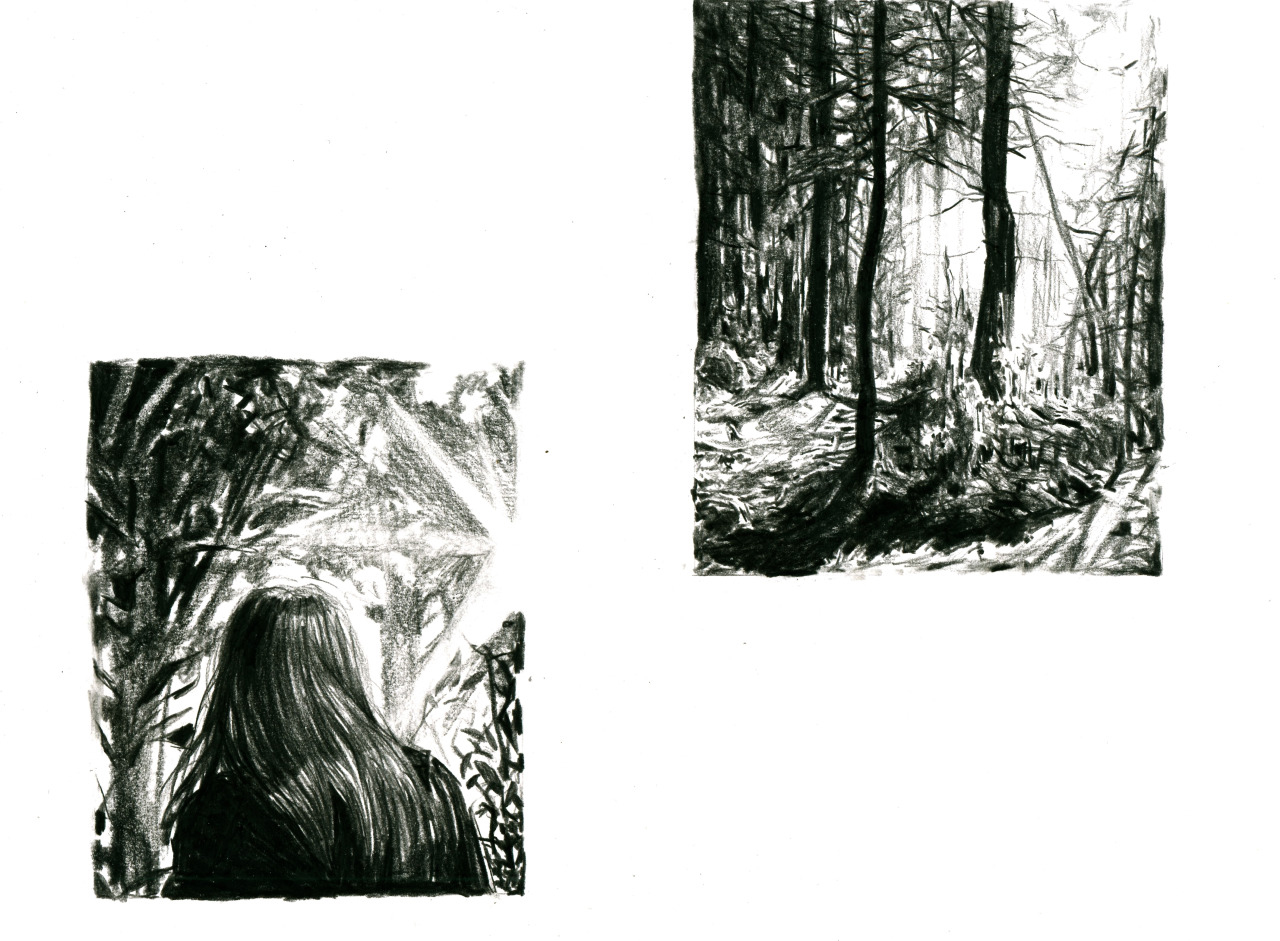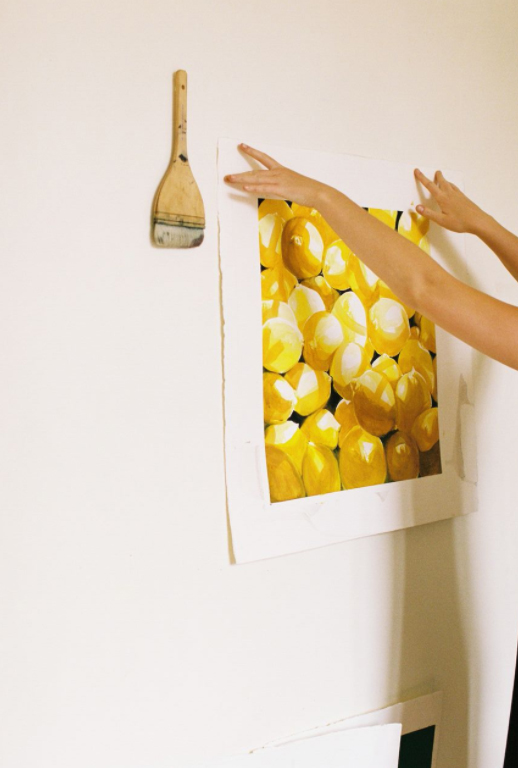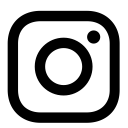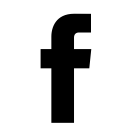Visuals / Illustration
Evie Cahir
We chat with the ever talented Evie Cahir about her diverse body of work, evolving style and travel influences.
TJ: As an illustrator, how did you find your first year out post study? How did you go about networking and getting your work out there, connecting with potential clients?
EC: My first year post University was daunting and exciting. I spent almost all my time painting, looking back it seems like I had a lot more energy and output. I was still working through style issues which involved doing a lot of collage/messy crayon work/creating a lot of zines. I wasn’t sure what my style was and felt like the only way to decide what I liked and wanted to create more of was to be creating as much as possible. This awkward stage of trialling different mediums, techniques and style made networking and getting my work out there easier. I know it is not as simple as this, but sometimes it seems like a simple equation of more work generated=more attention from potential clients.
I love your idea of producing the SnackPacks! Can you elaborate a bit on how they work and what pieces go into them?
SnackPacks are collections of recent original studies, small paintings, scraps, stickers, photographs from the desk. Aside from the satisfaction and pleasure of picking and packing original work for customers, selling Snack Packs allows for me to create new work, as I quickly run out of space to keep all my work!
Do you find this approach to selling work more accessible for people? Does it generate a wider interest than selling single, bigger pieces of work?
I started making Snack Packs when I bought zines and books from other artists and really enjoyed the additional personalised notes and drawings in the packages, it was often a highlight of buying work! The pieces that go into them are paintings I have created in the last week or so, generally pieces that complement each other, for example: breakfast studies with food packaging I like, handwritten recipes from friends - a food theme!
EC: My first year post University was daunting and exciting. I spent almost all my time painting, looking back it seems like I had a lot more energy and output. I was still working through style issues which involved doing a lot of collage/messy crayon work/creating a lot of zines. I wasn’t sure what my style was and felt like the only way to decide what I liked and wanted to create more of was to be creating as much as possible. This awkward stage of trialling different mediums, techniques and style made networking and getting my work out there easier. I know it is not as simple as this, but sometimes it seems like a simple equation of more work generated=more attention from potential clients.
I love your idea of producing the SnackPacks! Can you elaborate a bit on how they work and what pieces go into them?
SnackPacks are collections of recent original studies, small paintings, scraps, stickers, photographs from the desk. Aside from the satisfaction and pleasure of picking and packing original work for customers, selling Snack Packs allows for me to create new work, as I quickly run out of space to keep all my work!
Do you find this approach to selling work more accessible for people? Does it generate a wider interest than selling single, bigger pieces of work?
I started making Snack Packs when I bought zines and books from other artists and really enjoyed the additional personalised notes and drawings in the packages, it was often a highlight of buying work! The pieces that go into them are paintings I have created in the last week or so, generally pieces that complement each other, for example: breakfast studies with food packaging I like, handwritten recipes from friends - a food theme!
How did you find the process of producing your book ‘A Single Tear’? The self publishing scene is huge at the moment, was this always something you’ve wanted to do?
The process of creating A Single Tear was a challenging one. I created the work in a two month period upon returning from the art residency in Finland. I created over fifty drawings and felt that packaging all the work in a book was the best way to present all the pieces. I had not published a book before (aside from one-off zines and original art books) so I reached out to a few friends that knew what they were doing. Ultimately it was all self-taught/intuitive layout for the project. It is such an exciting and rewarding process of self publishing, I frequently have ideas for future self published books - the only issue is fronting the money for printing and having to decide on a project to stick to!
Do you have an ideal working environment and process? Is there anything you couldn’t work without?
My ideal working environment is room to myself, I think it is as simple and selfish as that! Concentration lapses and I get self conscious about my routine surrounding creating work, for example: Amount of nervous snacking I do, painting in my undies, smoke-breaks and all the staring I do in between the actual painting! I can create sketchy work on the go but for work that requires longer amounts of concentration I would prefer to be in a space where I know I can work uninterrupted for 3 - 4 hours, switch to ‘Aeroplane Mode’ basically. Things I can not work without include natural light, as my eyes hurt working in the dark, and familiar supplies. I recently worked with another artists paintbrush and it made me realise how much I rely on the consistency and familiar attributes of my own tools and space.
The process of creating A Single Tear was a challenging one. I created the work in a two month period upon returning from the art residency in Finland. I created over fifty drawings and felt that packaging all the work in a book was the best way to present all the pieces. I had not published a book before (aside from one-off zines and original art books) so I reached out to a few friends that knew what they were doing. Ultimately it was all self-taught/intuitive layout for the project. It is such an exciting and rewarding process of self publishing, I frequently have ideas for future self published books - the only issue is fronting the money for printing and having to decide on a project to stick to!
Do you have an ideal working environment and process? Is there anything you couldn’t work without?
My ideal working environment is room to myself, I think it is as simple and selfish as that! Concentration lapses and I get self conscious about my routine surrounding creating work, for example: Amount of nervous snacking I do, painting in my undies, smoke-breaks and all the staring I do in between the actual painting! I can create sketchy work on the go but for work that requires longer amounts of concentration I would prefer to be in a space where I know I can work uninterrupted for 3 - 4 hours, switch to ‘Aeroplane Mode’ basically. Things I can not work without include natural light, as my eyes hurt working in the dark, and familiar supplies. I recently worked with another artists paintbrush and it made me realise how much I rely on the consistency and familiar attributes of my own tools and space.
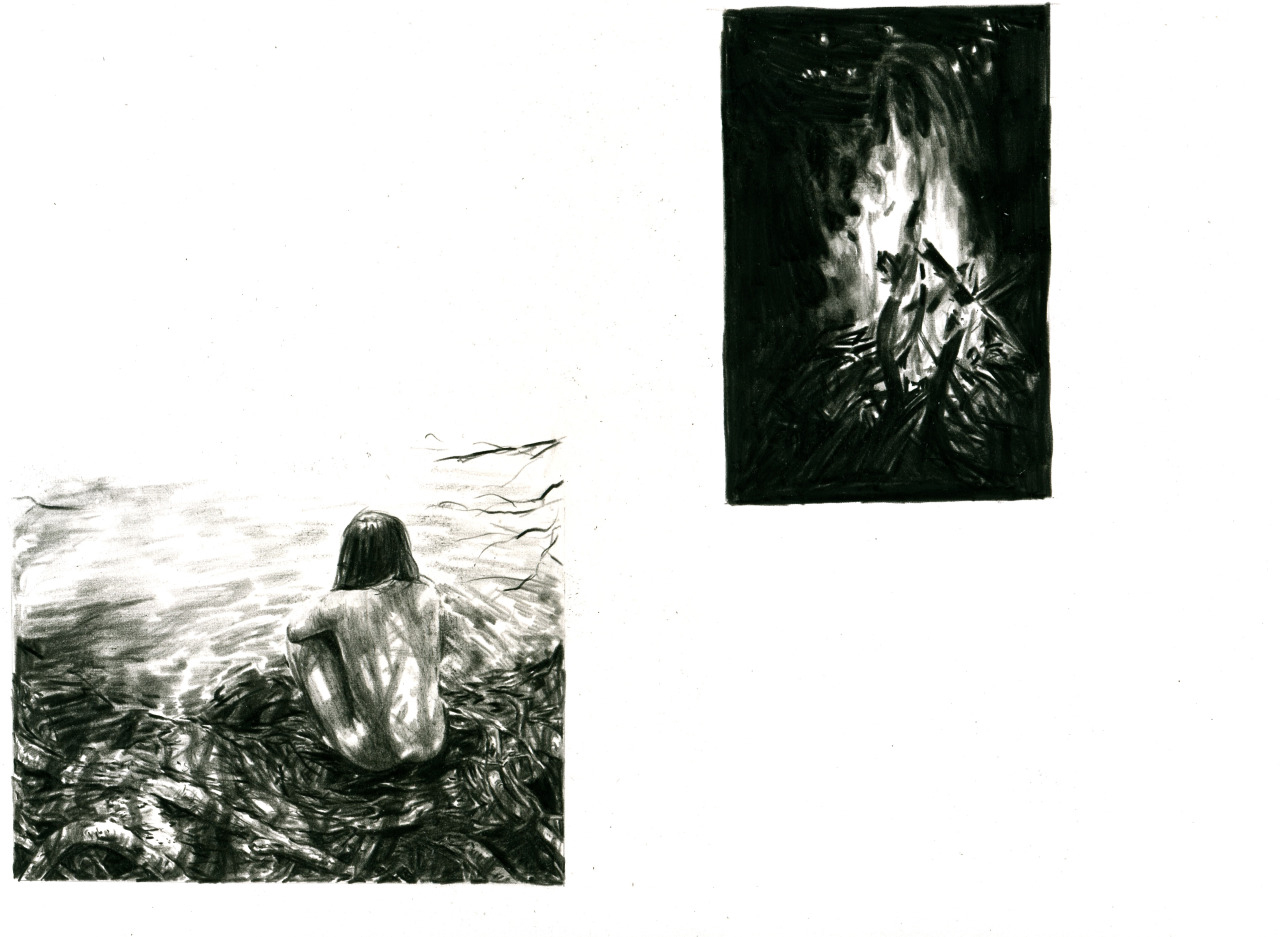
I loved your recent drawings in Berlin. Could you tell us a bit about your trip and how it’s influenced your work since.
I was in Berlin last year for just under two months, it was dubbed ‘The Best Summer Ever’ by myself and my best friends who I met up with over there, I drew a lot of inspiration in Berlin! I was doing some serious Summer Research whilst over there, which includes: Studying shadows and sunlight, swimming in lakes, sitting under trees, riding around on my bike taking mental screenshots of all the beautiful colors that photos would not do justice and honing a new found appreciation for the sun.
Any upcoming travel plans?
Upcoming travel plans revolve around Australia this year, first up - Sydney and then Noosa. Maybe Japan and hopefully back to Germany in 2019!
I was in Berlin last year for just under two months, it was dubbed ‘The Best Summer Ever’ by myself and my best friends who I met up with over there, I drew a lot of inspiration in Berlin! I was doing some serious Summer Research whilst over there, which includes: Studying shadows and sunlight, swimming in lakes, sitting under trees, riding around on my bike taking mental screenshots of all the beautiful colors that photos would not do justice and honing a new found appreciation for the sun.
Any upcoming travel plans?
Upcoming travel plans revolve around Australia this year, first up - Sydney and then Noosa. Maybe Japan and hopefully back to Germany in 2019!
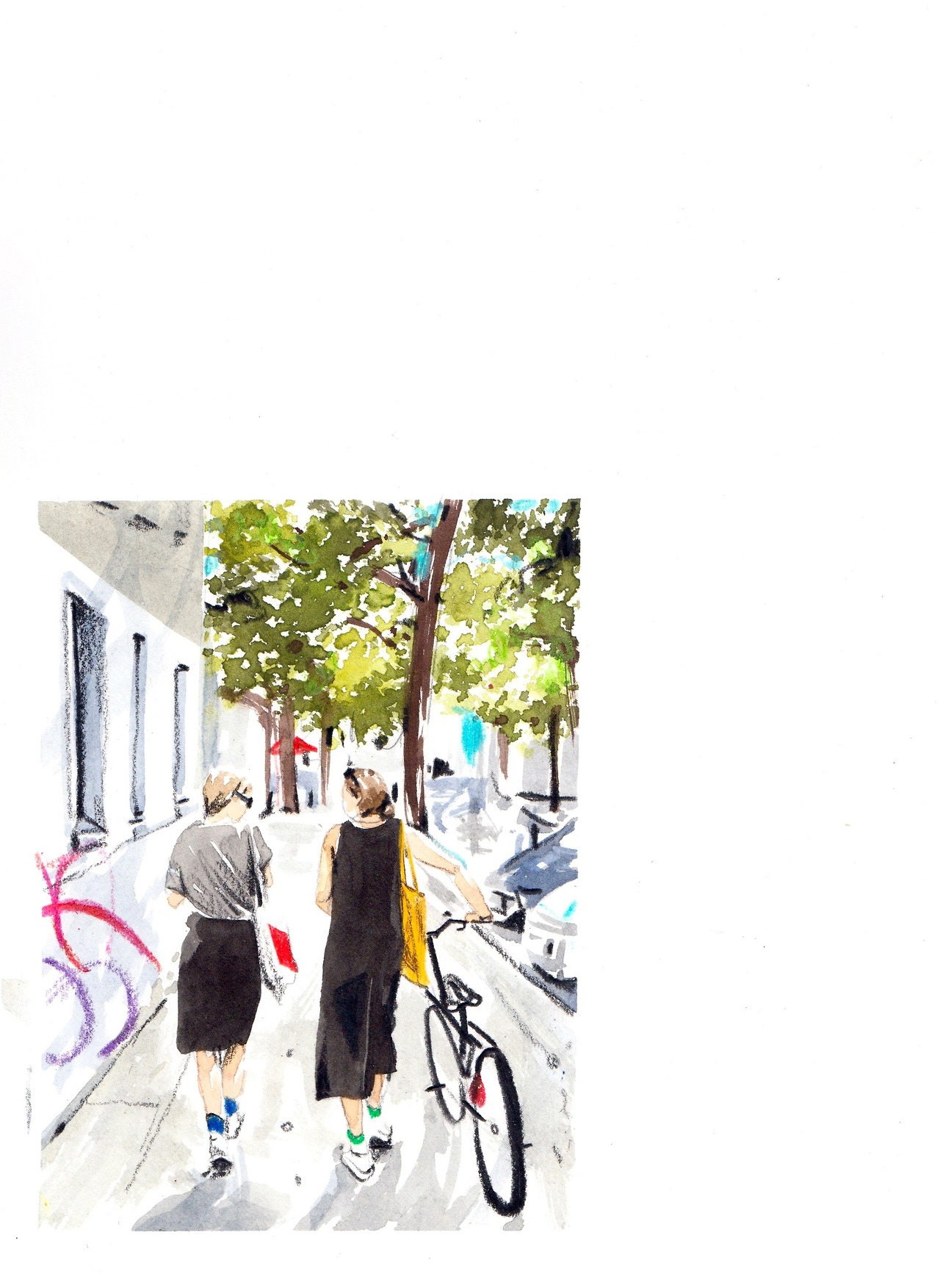
Between producing independent works, exhibiting, collaborating, publishing and responding to client briefs you’ve got your fingers in a lot of pies. How do you find the breadth of work within the industry and is there a dream project you’d want to work on?
The breadth of work in the illustration industry is one that is constantly surprising me, in that it is always a mixed bag and I am so lucky to be asked to share my work. That being said, I do need to be more proactive in initiating projects that sit outside the expected realm of illustration output, for example: ceramics, murals, installation, clothing, flags, performance pieces, woodwork, workshops etc. Dream projects are always on the back-burner, sometimes coming to fruition, sometimes need a bit more time to stew-brew. The dream projects that I have been adding to/returning to are to do with my house mate and all round good mate Carla McRae, creating and distributing a newsletter, putting together a joint exhibition about memories, childhood and food. The main dream project is doing off-shore Market Research though, which involves visiting as many markets around the world and researching all the different smells, colors, customs and trash that make up the different markets.
The breadth of work in the illustration industry is one that is constantly surprising me, in that it is always a mixed bag and I am so lucky to be asked to share my work. That being said, I do need to be more proactive in initiating projects that sit outside the expected realm of illustration output, for example: ceramics, murals, installation, clothing, flags, performance pieces, woodwork, workshops etc. Dream projects are always on the back-burner, sometimes coming to fruition, sometimes need a bit more time to stew-brew. The dream projects that I have been adding to/returning to are to do with my house mate and all round good mate Carla McRae, creating and distributing a newsletter, putting together a joint exhibition about memories, childhood and food. The main dream project is doing off-shore Market Research though, which involves visiting as many markets around the world and researching all the different smells, colors, customs and trash that make up the different markets.

